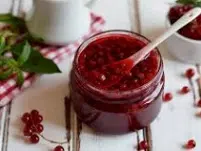There are different theories about the etymological origin of the term jam. Thus, there are those who argue that it derives from Latin, specifically from “melimelum”, which can be translated as “quince”. A word that in turn comes from the Greek, from the word “melimelon”, which is the result of the sum of two lexical components:
-The noun “meli”, which means “honey”.
-The word “melon”, which is synonymous with “apple”.
However, another theory establishes that jam comes from the Persian “meba”, which was the name they used to refer to a sweet liquid that was made from quince.
Theories to which are added others that indicate that they come from the French expression “Marie malade” or even from the Portuguese “marmelada”.
The term is used to refer to the preserve that is prepared with sugar and cooked fruit .
 Depending on the type of jam, the proportion of sugar and fruit may vary. This relationship is also linked to fruit ripening and other issues.
Depending on the type of jam, the proportion of sugar and fruit may vary. This relationship is also linked to fruit ripening and other issues.
Pectin plays a fundamental role in the production of jams. This polysaccharide found in the cell walls of fruits acts as a thickener and is responsible, by reacting with sugar during cooking, for the solidification of the mixture once it cools.
When the fruit does not have pectin, this substance can be added during the jam-making process . Another possibility is to incorporate a percentage of another fruit that does contain the polysaccharide in question.
To prepare homemade or artisanal jams , experts recommend choosing fruits that are neither too ripe nor too green. On the other hand, it is key to use the appropriate amount of sugar (between 700 and 1,000 grams per kilo of fruit) since it serves as a preservative.
Although it is advisable to take jam in moderation, we must not overlook the fact that it has a series of properties that make it a beneficial food for the body. Specifically, it is considered that among its main advantages the following stand out:
-It represents an important contribution of energy to the body.
-No less significant is that it is rich in fiber and this, among other things, is a wonderful element to improve intestinal transit.
-In the same way, it must be taken into account that the whole fruit can be eaten since both the pulp and the skin are used to make it.
Two of the most common ways to eat jam is on toast with butter and also as a main part of all types of sweets and cakes.
It is important not to confuse between jams, jellies and jams . As a first point, you have to know that the three products are made with sugar and fruit, although they have differences. In jams there must be at least 30% fruit by the weight of the final product. In jams, 35% or more, and they also usually contain more sugar.
As for jellies, they are made with fruit juice , and not with pieces or whole fruits. They include an amount of sugar similar to jams and have a gelatin texture.
